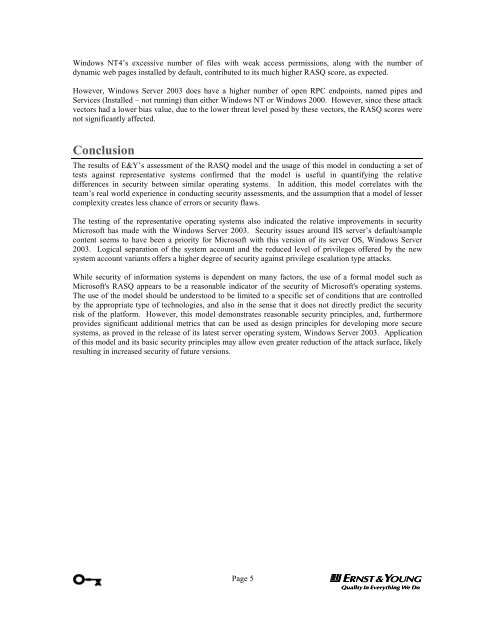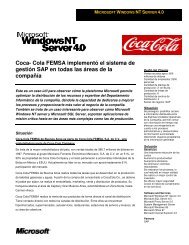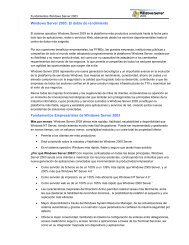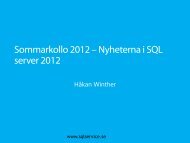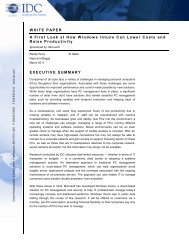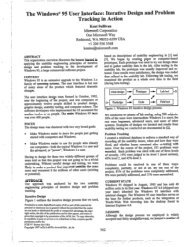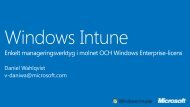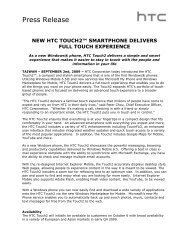Relative Attack Surface Quotient - Microsoft
Relative Attack Surface Quotient - Microsoft
Relative Attack Surface Quotient - Microsoft
Create successful ePaper yourself
Turn your PDF publications into a flip-book with our unique Google optimized e-Paper software.
Windows NT4’s excessive number of files with weak access permissions, along with the number of<br />
dynamic web pages installed by default, contributed to its much higher RASQ score, as expected.<br />
However, Windows Server 2003 does have a higher number of open RPC endpoints, named pipes and<br />
Services (Installed – not running) than either Windows NT or Windows 2000. However, since these attack<br />
vectors had a lower bias value, due to the lower threat level posed by these vectors, the RASQ scores were<br />
not significantly affected.<br />
Conclusion<br />
The results of E&Y’s assessment of the RASQ model and the usage of this model in conducting a set of<br />
tests against representative systems confirmed that the model is useful in quantifying the relative<br />
differences in security between similar operating systems. In addition, this model correlates with the<br />
team’s real world experience in conducting security assessments, and the assumption that a model of lesser<br />
complexity creates less chance of errors or security flaws.<br />
The testing of the representative operating systems also indicated the relative improvements in security<br />
<strong>Microsoft</strong> has made with the Windows Server 2003. Security issues around IIS server’s default/sample<br />
content seems to have been a priority for <strong>Microsoft</strong> with this version of its server OS, Windows Server<br />
2003. Logical separation of the system account and the reduced level of privileges offered by the new<br />
system account variants offers a higher degree of security against privilege escalation type attacks.<br />
While security of information systems is dependent on many factors, the use of a formal model such as<br />
<strong>Microsoft</strong>'s RASQ appears to be a reasonable indicator of the security of <strong>Microsoft</strong>'s operating systems.<br />
The use of the model should be understood to be limited to a specific set of conditions that are controlled<br />
by the appropriate type of technologies, and also in the sense that it does not directly predict the security<br />
risk of the platform. However, this model demonstrates reasonable security principles, and, furthermore<br />
provides significant additional metrics that can be used as design principles for developing more secure<br />
systems, as proved in the release of its latest server operating system, Windows Server 2003. Application<br />
of this model and its basic security principles may allow even greater reduction of the attack surface, likely<br />
resulting in increased security of future versions.<br />
Page 5


